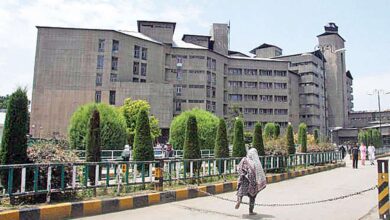
Indian benchmark indices Sensex and Nifty opened sharply lower on Monday, tracking a global selloff triggered by escalating trade tensions and rising recession fears in the U.S.
At 9:16 AM, the BSE Sensex plunged 3,072 points, or 4.09%, to 72,296, while the Nifty50 tumbled 1,146 points, or 5%, to 21,758 — marking its steepest drop
The market capitalisation of all listed companies on the BSE declined by Rs 19.4 lakh crore to Rs 383.95 lakh crore.
All major sectors were in the red, with Nifty Metal plunging 8% and Nifty IT falling over 7%. Nifty Auto, Realty, and Oil & Gas declined more than 5% each. In the broader market, the small-cap and mid-cap indices dropped 10% and 7.3%, respectively.
6 reasons why stock market crashed today:
1. Nasdaq enters bear market
The Nasdaq index officially entered a bear market on Friday, falling more than 20% from its recent peak. The decline followed U.S. President Donald Trump’s announcement of sweeping tariffs earlier in the week, which sparked fears of a global economic slowdown. The scale and scope of the tariffs surprised investors, triggering sharp selloffs across global markets.
Federal Reserve Chair Jerome Powell said the tariffs were “larger than expected” and warned they could significantly impact both inflation and economic growth, adding to the uncertainty surrounding the U.S. economic outlook.
2. Global selloff
Indian equities mirrored the sharp declines across global markets, as major Asian indices plunged across the board. Japan’s Nikkei fell 7%, South Korea’s Kospi dropped 5%, and China’s blue-chip index lost nearly 7%. The Hang Seng index slumped over 10.5%.
Meanwhile, U.S. futures extended losses, with Nasdaq futures down 4% and S&P 500 futures falling 3.1%. European futures also traded deep in the red.
3. Recession fears overshadow inflation worries
Market participants now believe that recession concerns outweigh short-term inflation risks. While U.S. consumer price index (CPI) data, due later this week, is expected to show a 0.3% increase for March, analysts fear that tariffs will soon drive up costs significantly across sectors — from groceries to automobiles.
These rising input costs are also expected to squeeze corporate profit margins, just as earnings season begins. Around 87% of U.S. companies are set to report results between April 11 and May 9, with major banks among the first to announce earnings.
4. Sharp plunge in global commodity prices
Global commodity prices tumbled amid mounting fears of weakening demand and a looming economic slowdown.
Brent crude fell 6.5%, WTI dropped 7.4%, while gold slipped 2.4% and silver plunged 7.3%. Base metals also saw steep declines, with copper down 6.5%, zinc 2%, and aluminium 3.2%, as escalating trade tensions and recession concerns rattled investor confidence.
5. Investors flee to safe havens
Investors rushed to safer assets amid growing fears of a global recession, further pressuring equity markets. The yield on the 10-year U.S. Treasury fell 8 basis points to 3.916% as demand for government bonds surged. Fed funds futures also spiked, pricing in an additional 25-basis-point rate cut by the U.S. Federal Reserve this year.
This flight to safety triggered broad-based selling in equities, as risk-off sentiment deepened across global markets. Despite Fed Chair Jerome Powell stating on Friday that the central bank is “in no hurry” to adjust policy, market expectations now reflect a 56% chance of a rate cut as early as May.
6. Escalating global trade war
Fears of a global trade war intensified after China announced retaliatory tariffs on a broad range of U.S. goods, following sweeping U.S. tariff hikes earlier in the week. The escalating tit-for-tat measures have raised concerns about a slowdown in global trade and economic growth.
Investors worry that prolonged trade tensions between the world’s two largest economies could disrupt supply chains, dampen corporate earnings, and further weaken already fragile global demand—contributing to the sharp selloff in equities worldwide.
“Global markets are experiencing heightened volatility driven by extreme uncertainty. No one has a clear sense of how this turbulence triggered by Trump’s tariffs will unfold. A ‘wait and watch’ approach may be the best strategy in this phase of market instability,” said Dr. V. K. Vijayakumar, Chief Investment Strategist at Geojit Financial Services.









